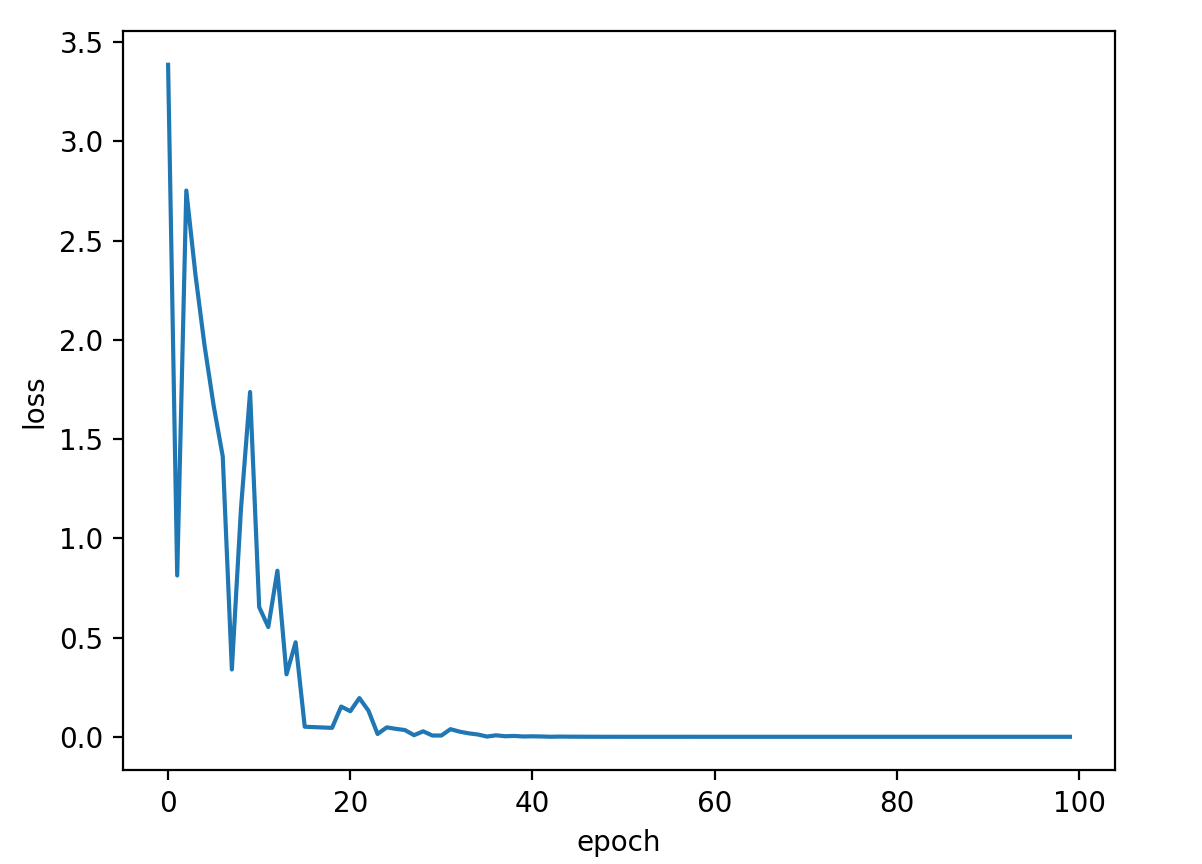#梯度下降法 from matplotlib import pyplot as plt # prepare the training set x_data = [1.0, 2.0, 3.0] y_data = [2.0, 4.0, 6.0] # initial guess of weight w = 1.0 # define the model linear model y = w*x def forward(x): return x * w #define the cost function MSE(均方差) def cost(xs, ys): cost = 0 for x, y in zip(xs, ys): y_pred = forward(x) cost += (y_pred - y) ** 2 return cost / len(xs) # define the gradient function gd def gradient(xs, ys): grad = 0 for x, y in zip(xs, ys): grad += 2 * x * (x * w - y) return grad / len(xs) epoch_list = [] cost_list = [] print('Predict (before training)', 4, forward(4)) for epoch in range(100): cost_val = cost(x_data, y_data) grad_val = gradient(x_data, y_data) w -= 0.01 * grad_val print('Epoch:', epoch, 'w=', w, 'loss=', cost_val) epoch_list.append(epoch) cost_list.append(cost_val) print('Predict (after training)', 4, forward(4)) plt.plot(epoch_list, cost_list) plt.xlabel('Epoch') plt.ylabel('cost') plt.show()

#随机梯度下降法,代码中没有体现哪里随机,差评,在网上找了一下随机怎么加,加了一个随机 '''随机梯度下降法在神经网络中被证明是有效的。效率较低(时间复杂度较高),学习性能较好。 (梯度下降法计算时可以并行,所以效率好,但是容易进入鞍点; 随机梯度下降需要等待上一个值运行完才能更新下一个值,无法并行计算,但是某种程度上能解决鞍点问题; 因此,有种折中的办法叫batch。) 随机梯度下降法和梯度下降法的主要区别在于: 1、损失函数由cost()更改为loss()。cost是计算所有训练数据的损失,loss是计算一个训练函数的损失。对应于源代码则是少了两个for循环。 2、梯度函数gradient()由计算所有训练数据的梯度更改为计算一个训练数据的梯度。 ''' import random import matplotlib.pyplot as plt x_data = [1.0, 2.0, 3.0] y_data = [2.0, 4.0, 6.0] w = 1.0 def forward(x): return x * w # calculate loss function def loss(x, y): y_pred = forward(x) return (y_pred - y) ** 2 # define the gradient function sgd(随机梯度下降) def gradient(x, y): return 2 * x * (x * w - y) epoch_list = [] loss_list = [] print('predict (before training)', 4, forward(4)) for epoch in range(100): #原代码 # for x, y in zip(x_data, y_data): # grad = gradient(x, y) # w = w - 0.01 * grad # update weight by every grad of sample of training set # print("\tgrad:", x, y, grad) # l = loss(x, y) # print("progress:", epoch, "w=", w, "loss=", l) #加随机 rc = random.randrange(0,3) x1 = x_data[rc] y1 = y_data[rc] grad = gradient(x1, y1) w = w - 0.01 * grad l = loss(x1, y1) epoch_list.append(epoch) loss_list.append(l) print('predict (after training)', 4, forward(4)) plt.plot(epoch_list, loss_list) plt.ylabel('loss') plt.xlabel('epoch') plt.show()
